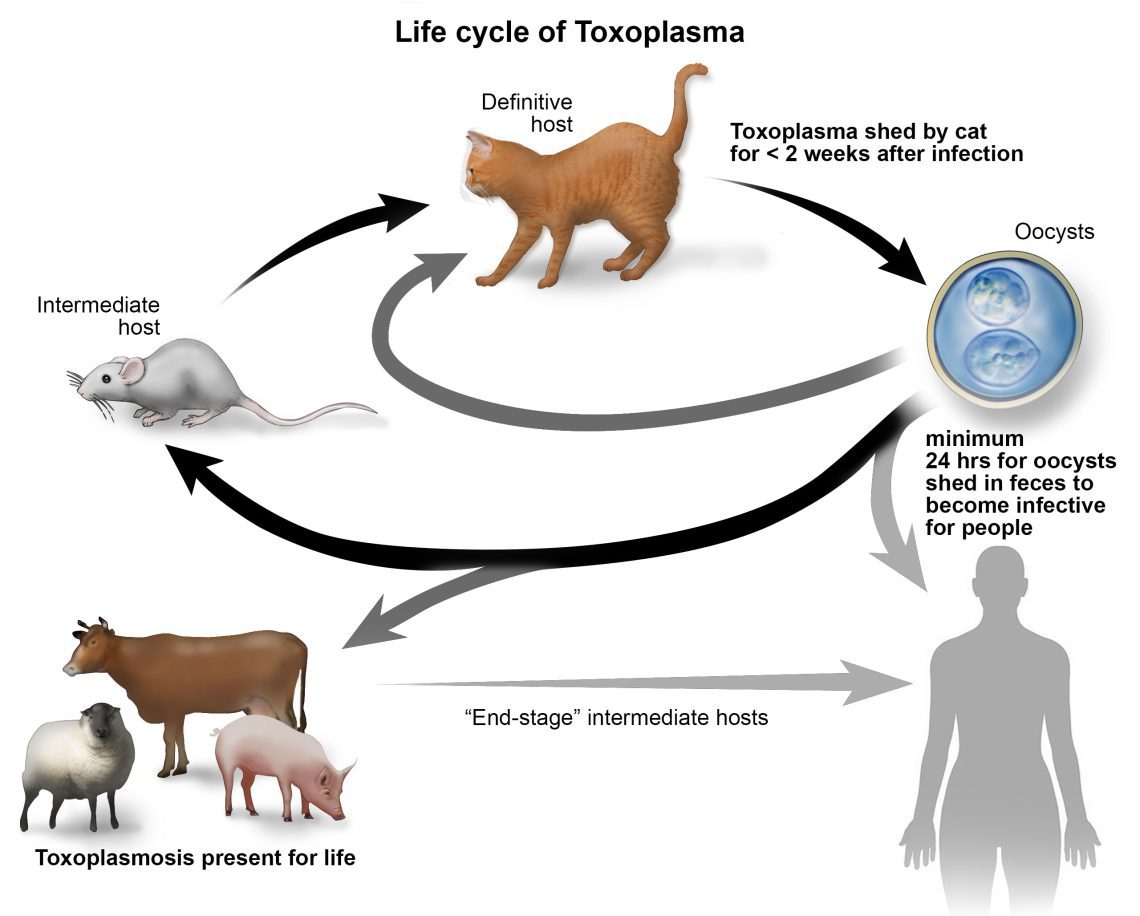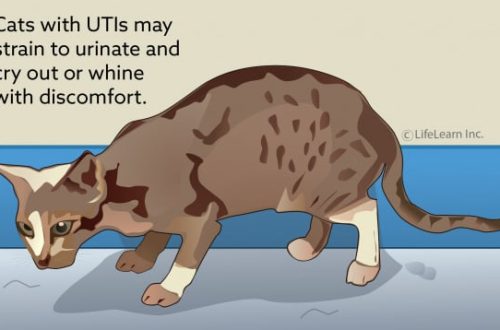
Toxoplasmosis in cats: symptoms, treatment and prevention
Toxoplasmosis in cats is caused by the intracellular parasite Toxoplasma gondii. It is dangerous not only for cats, but also for dogs, rodents, and even for humans. How to protect yourself and your pet from toxoplasmosis?
Toxoplasmosis is a disease that can infect any mammal, including humans. The parasite Toxoplasma gondii is quite tenacious, its prevalence is almost ubiquitous, and livestock, street rats, and so on can be carriers. But only in the intestines of cats, parasite spores develop into oocysts that can infect other creatures. Later, the oocysts are excreted along with the faeces and remain viable for a long time.
Contents
Toxoplasmosis in cats: symptoms and routes of infection
A cat is able to become infected with toxoplasmosis through eating small mice, rats and birds – toxoplasma live in their body, but do not multiply. Already in the intestines of a cat, the parasite begins its life cycle.
Veterinarians distinguish several forms of toxoplasmosis in cats:
- subacute – sluggish, in which there are no special symptoms,
- acute – with the manifestation of symptoms of the disease,
- chronic.
The symptoms of toxoplasmosis in cats are as follows:
- nose run,
- tearing, inflammation or swelling of the eyes,
- lethargy,
- diarrhea,
- vomiting,
- sudden weight loss
- violation of coordination of movements.
At the first symptoms of toxoplasmosis, you should immediately contact a veterinarian. It is also important to do this because some symptoms may be harbingers of other diseases – for example, weight loss is one of the signs cancer in cats.
Diagnosis and treatment
Toxoplasmosis can be diagnosed using PCR tests and specific studies that are carried out on plasma blood. As treatment, the veterinarian prescribes antibiotics, anti-inflammatory drugs and medicines to relieve symptoms of the disease. During treatment, the cat should be isolated from other pets.
Preventive measures
Toxoplasmosis is quite difficult to treat, so it is much more effective to prevent its occurrence. To keep your pet safe:
- exclude self-walking of a cat;
- do not give the cat raw meat and offal;
- regularly disinfect the animal’s habitat, its beds, trays, bowls and toys;
- get vaccinated in a timely manner.
In order not to get toxoplasmosis from cats, a person needs:
- use gloves while washing cat tray,
- wash hands thoroughly after interacting with street cats,
- expectant mothers should be especially careful, since toxoplasmosis belongs to the group of so-called TORCH infections that pose a danger to the fetus during fetal development.
And also use a separate board for cutting meat, do not eat raw meat.
See also:
- Tapeworms in cats, helminthiasis: symptoms and treatment
- Leukemia in a cat – symptoms of the virus and treatment
- Blood in the urine of a cat: causes and treatment





